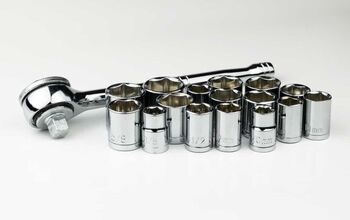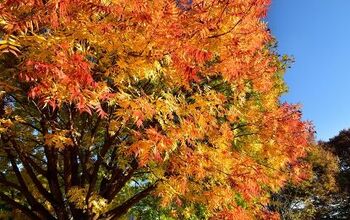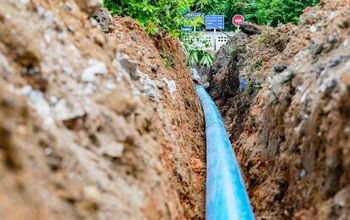Five Benefits Of Growing Native Plants

Many people understandably want to import plants from other states and climates. However, you may notice that growing non-native plants doesn’t always go as planned, and it can be frustrating. That said, you can’t deny that growing native plants is typically worth every effort.
One of the top benefits of growing native plants is that you can attract pollinators, which will benefit your garden. You can also depend on native perennials to come back each year and live long lives if you take great care of them. Native plants are also low-maintenance compared to non-native plants, and they grow relatively quickly.
Think twice before you buy non-native plants from a plant nursery or even an online plant marketplace. It may seem like a great idea, but it doesn’t always pay off. Follow along as we highlight the top five benefits of growing native plants and compare them to non-native plants.
Five Reasons To Grow Native Plants
There is no shortage of reasons to grow native plants, especially if you care about your local ecosystem. However, it can be tempting to grow non-native plants, as many of them are beautiful and carry benefits themselves. That said, you can’t deny the many benefits that native plants carry, such as:
1. Attract Pollinators
Any seasoned gardener can tell you about the importance of pollinators. Pollinators can help make your job easier by encouraging healthy growth in your garden. However, you can more easily attract pollinators if you grow native plants in your garden.
Pollinators are so important that the bee threat has become a huge part of modern environmental discourse. Not only do we need pollinators, but so do many other animals and bugs in your local ecosystem. Although non-native plants may attract pollinators, they’re not as effective as native plants.
The native bugs and animals in your ecosystem are primed to expect and seek native plants. They’re critical to their life cycles and can ultimately benefit you. Attracting pollinators is just as much about helping your garden as it is about helping the pollinators themselves.
2. Easy Maintenance
Have you ever struggled to care for a tropical plant in an environment that’s far from the tropics? If so, then you’re not alone, and it’s because the plant isn’t native to your ecosystem. Non-native plants have needs that your ecosystem simply may not accommodate, and that makes maintenance difficult.
For example, you may need to water non-native plants more frequently than your native plants. That’s especially true if they’re native to somewhere like southern Florida, where it rains frequently, even in short spurts. Similarly, you may have to treat non-native plants for pests that your other plants simply don’t attract.
The extra water and pesticides can add up over time and cost you a small fortune. That, paired with spending extra time on maintenance, can make caring for non-native plants quite inconvenient. You won’t need to go to great lengths to keep a native plant alive, beyond watering and pruning.
3. Quick Growth
You’re not alone if you’ve ever struggled to grow a non-native plant in a climate it’s not meant for. Non-native plants often struggle and take a long time to grow, especially when compared to native plants. This can be frustrating if you look forward to enjoying healthy, beautiful growth, and it takes longer than you expect.
For example, it may take longer for a non-native tree to take root than a native tree. This can affect its life cycle and even the tree’s stability, which can be problematic. On the other hand, some invasive tree roots spread wildly and even damage nearby plants.
You can make life in your yard and garden much easier if you primarily grow native plants. That way, you can enjoy lush, beautiful plants in a short time.
4. Longevity
Anyone who plants herbs, vegetables, flowers, and trees wants to get as much time out of them as possible. While you don't expect annuals to live forever, you at least want to get as much time out of your perennials as possible. You can typically count on your native perennials to come back, but that’s not always the case with non-native plants.
Native plants evolve and adapt to their environments, including the temperature, soil, and weather cycles. They even adapt to local pests, which helps ensure longevity under many circumstances. Conversely, non-native plants aren’t accustomed to the soil, rain, pests, and weather conditions in your local ecosystem.
That’s why even non-native perennials may not come back the following spring if they’ve been through winter. This is especially true if you live in the Midwest or on the East Coast, where the winters can be harsh. Stick to native plants to ensure longevity, and don’t be surprised if your non-native plants don’t come back.
5. They Don’t Attract Invasive Pests
Have you ever bought a non-native plant from a nursery and noticed bugs you aren’t familiar with? If so, then you may have accidentally introduced invasive pests to your local ecosystem. That’s because plant nurseries often buy plants from all over the country, and even all over the world.
Sadly, invasive pests sometimes hitch a ride on plants, and people ship them to other states. That’s why you sometimes hear about invasive mites and other bugs that wind up in states where they aren’t native. Although the invasive pest may not survive in your climate, that’s not always the case.
They may reproduce and slowly increase their population, which can wreak havoc on your ecosystem. It may seem unlikely, but it’s more common than you think. You can avoid this problem altogether if you stick to native plants that were grown and sold in your area.
Summing It Up
Native plants attract pollinators, which carry many benefits for your yard and the local ecosystem. It’s also much easier to take care of native plants than non-native, invasive plants, as native plants are low-maintenance. You can also expect native perennials to live longer and come back each year more reliably than non-native plants.
Related Guides:

Nick Durante is a professional writer with a primary focus on home improvement. When he is not writing about home improvement or taking on projects around the house, he likes to read and create art. He is always looking towards the newest trends in home improvement.
More by Nick Durante
















![Standard Dining Room Table Dimensions [for 4, 6, 8, 10 and 12 People]](https://cdn-fastly.upgradedhome.com/media/2023/07/31/9074335/standard-dining-room-table-dimensions-for-4-6-8-10-and-12-people.jpg?size=350x220)










